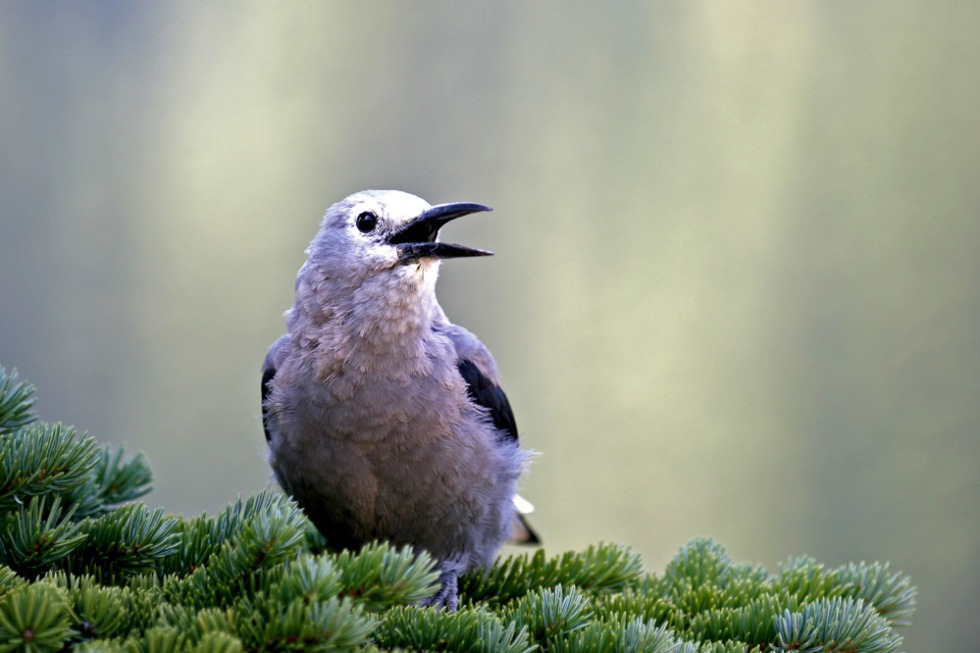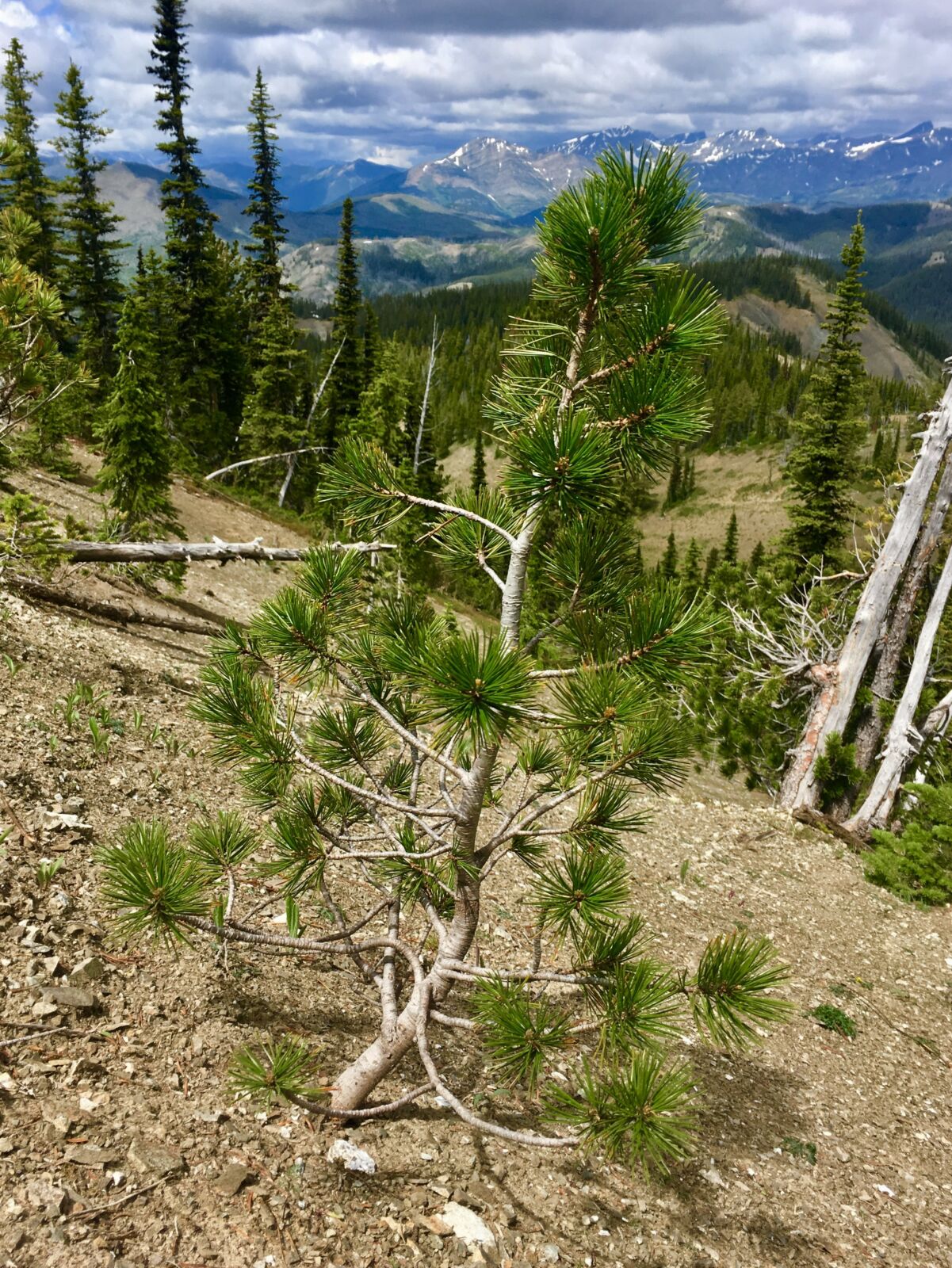Whitebark pine is a major component of high-elevation forests in the western United States and Canada. This slow growing, long-lived pine is important for our forests, wildlife, and communities for its role in maintaining numerous ecosystem processes and services. Now federally listed under the Endangered Species Act, whitebark pine has disappeared throughout much of its range, with continued losses expected in the coming decades. Each year, the NFF works with the U.S. Forest Service and our corporate partners to plant whitebark pine on National Forests.
One could easily call whitebark pine a pillar among trees, or at least perhaps a super tree. It is considered a keystone species for its role in supporting biodiversity and ecosystem stability and function. It is often the first species to return following a disturbance in its lower range, and in its upper range, the species can survive in harsh, windy conditions and support the growth of less tolerant conifers and underbrush as a nurse tree, providing shelter and protection. Whitebark also stabilizes and shades high-mountain snowpack, regulating snowmelt and runoff, maintaining watersheds and reducing soil erosion.

For wildlife, whitebark pine is incredibly valuable. It provides shelter in high-elevation forests and its seeds are large and highly nutritious. This makes it an important food source for many animals, ranging from grizzly and black bears to Clark’s nutcrackers and red squirrels. Clark’s nutcracker - a blue jay-sized bird with a long, sharp beak – and whitebark coevolved a mutualistic relationship, wherein the nutcracker enjoys a favorite food while playing a vital role in whitebark seed dispersal and germination. Red squirrels also love whitebark pine and store their seed bounties in caches called middens. Bears have the squirrels to thank for their share in the indulgence, as bears obtain the majority of their seeds from squirrel middens. The fat and protein-rich seeds are a valuable food for bears in the fall, helping them fatten up for hibernation. Whitebark’s high-mountain habitat can also help bears stay out of trouble with humans as they carry out their fall eating frenzy.
Photo by Gregory Slobirdr Smith
For Indigenous Americans who have long inhabited the West, whitebark pine holds rich cultural significance. The seeds were traditionally harvested as a winter food source (though they are so strong, it was often recommended that one consume them in small doses to avoid a stomach ache!), and some tribes harvested the bark for medicinal and other purposes. Tribes and First Nations throughout whitebark’s range continue to manage and steward whitebark pine forests today.

Photo by USDA Forest Service, Amber Drysdale
While whitebark pine can tolerate stressful environmental conditions, it is still susceptible to other disturbances. Since the early 1900s, whitebark forests have been in decline due to the combined effects of mountain pine beetle outbreaks, the non-native fungal disease white pine blister rust, and fire exclusion policies. Today, climate change is worsening whitebark’s plight, accelerating declines through indirect impacts that inhibit regeneration, limit habitat, and increase the intensity and frequency of wildfire and pine beetle and blister rust outbreaks.
All the more alarming, a 2018 Forest Service study found that 51 percent of all standing whitebark pines in the US were dead as of 2016.
Around 90 percent of all whitebark pine forests occur on public lands, including National Forests, therefore requiring a public, multi-stakeholder, range-wide strategy to their conservation and restoration. Our public lands are critical for whitebark’s continued existence, and our reforestation partnership with the U.S. Forest Service supports this.
Each year, the Forest Service monitors the status of whitebark pine forests on National Forests, searching for natural regeneration, collecting seeds from healthy trees, and evaluating future whitebark needs and opportunities for planting. When a site is selected for planting, seeds are collected and grown to seedlings at a Forest Service nursery, then later shipped back to the forest where silviculturists have selected the optimal planting sites for maximum survival.
Seedlings are often planted in natural microsites, such as this burnt log. The shade will help the seedling retain moisture, supporting its survival.
Since 2014, the NFF has funded the planting of nearly one million whitebark seedlings across thousands of acres of National Forests in Washington, Montana, and Idaho. We are grateful for the support of our corporate partners that have made these projects possible. These projects promote both whitebark restoration and wildfire recovery, supporting healthy watersheds, wildlife habitat, and the future of an imperiled species.
In December 2020, the U.S. Fish and Wildlife Service (USFWS) proposed to list whitebark pine as threatened under the Endangered Species Act. The USFWS announced its decision to list the species as threatened on December 14, 2022.

